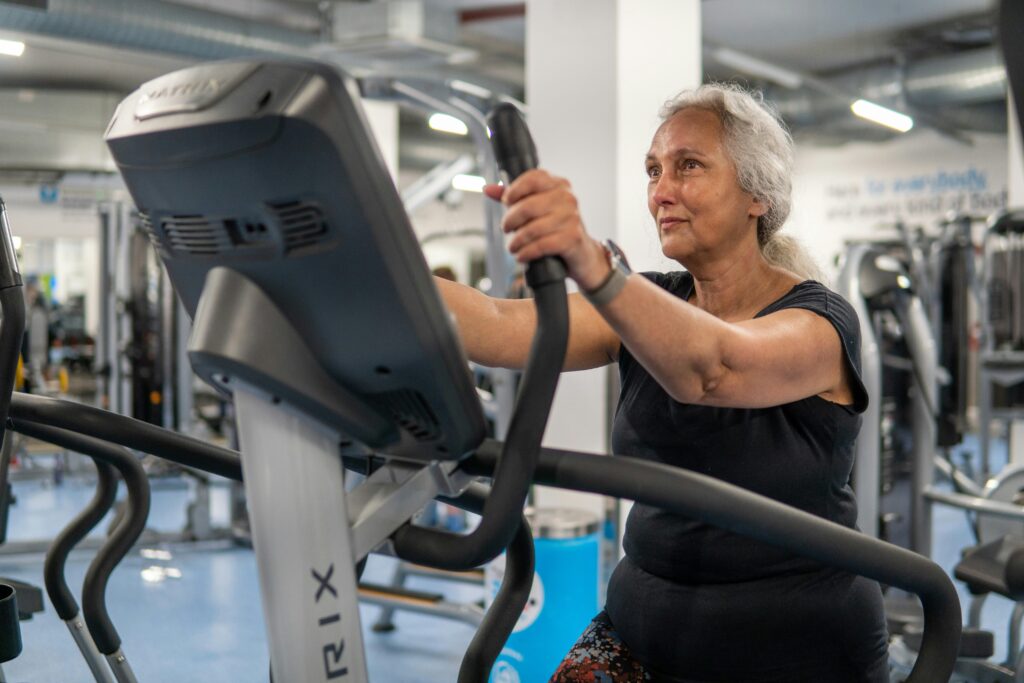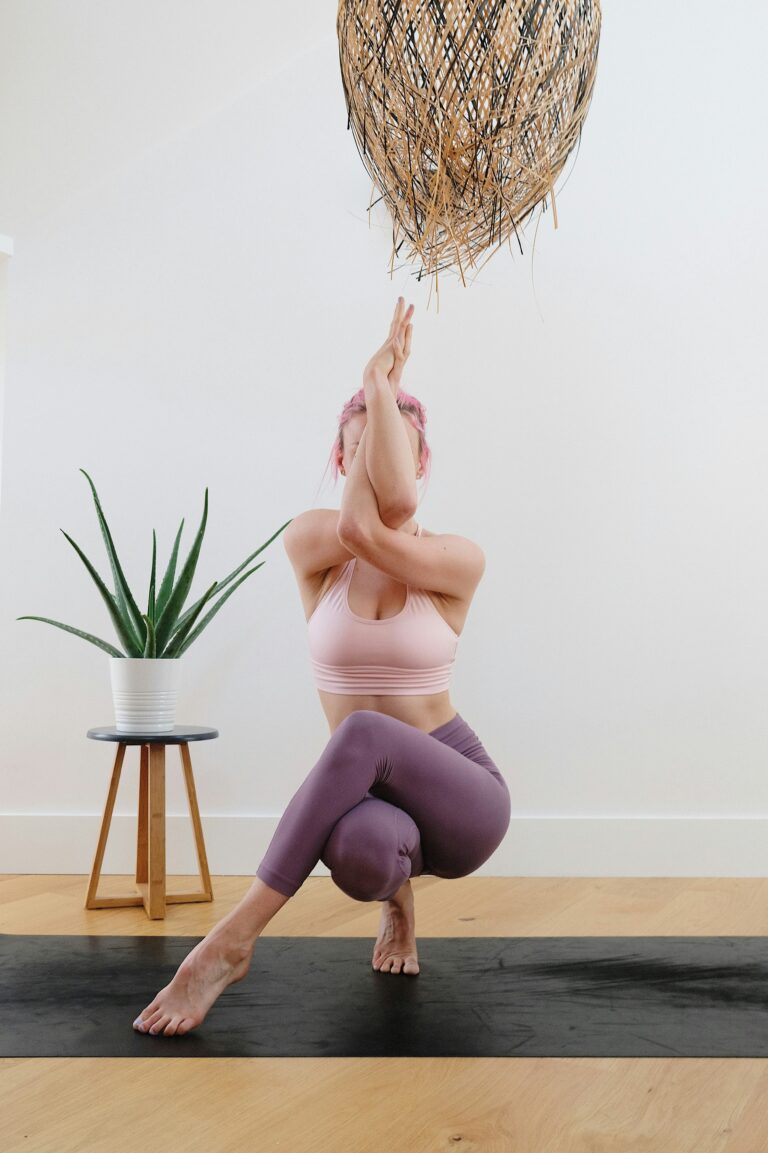Harnessing the power of mobility and posture-enhancing exercises is not just about looking good, but also feeling good. It’s about transforming your life, boosting your daily mobility, and putting an end to nagging aches and pains. This post dives deep into essential exercises designed to improve your mobility and correct your posture. Not only will these exercises make you feel lighter and more agile, but they will also foster better circulation, improved digestion, and reduced risk of injury.

In today’s sedentary world, many individuals struggle with stiffness and discomfort due to poor posture and restricted mobility. Our bodies were designed to move freely, and a lack of mobility can lead to a myriad of health problems, such as chronic pain, tension headaches, and musculoskeletal disorders. However, the good news is that incorporating these essential exercises into your daily routine can significantly improve your overall wellbeing and vitality.
Throughout the following sections, we will delve into the benefits of maintaining good posture, the science behind it, and the essential exercises to boost your daily mobility. Whether you’re working at your desk, doing household chores, or engaging in your favorite hobby, these exercises will ensure you can move with ease and confidence. Get ready to transform your life and health with these practical and effective exercises.
Understanding the Importance of Mobility and Posture
In our modern lifestyle—dominated by prolonged sitting, screen time, and repetitive movements—mobility and posture often take a back seat. However, maintaining both is essential not just for athletes or physically active individuals, but for everyone, regardless of age, profession, or fitness level. They form the foundation of functional movement, daily comfort, and long-term physical health.
🤸♂️ What Is Mobility?
Mobility refers to a joint’s ability to move actively through a full range of motion. Unlike flexibility—which focuses on the length of muscles—mobility involves a combination of muscle control, joint health, and neurological coordination. Healthy mobility ensures that joints move fluidly and efficiently, allowing you to perform activities like bending, reaching, walking, or climbing stairs without restriction or strain.
When mobility is limited, the body often compensates by overusing other muscles or joints, leading to imbalance, pain, and increased risk of injury.
🧍♀️ What Is Posture?
Posture is the way we align and hold our body—whether standing, sitting, or moving. Good posture keeps bones and joints in proper alignment so muscles can work efficiently, reducing strain and conserving energy. It also supports optimal breathing, digestion, and circulation.
Poor posture—like slouching, forward head tilt, or uneven weight distribution—can gradually cause muscular imbalances, tension headaches, back and neck pain, and even joint degeneration over time.
⚠️ Health Consequences of Poor Mobility and Posture
Neglecting mobility and posture can lead to a host of physical issues:
- Chronic neck, shoulder, and lower back pain
- Limited range of motion and joint stiffness
- Decreased athletic performance or exercise intolerance
- Impaired balance and coordination, increasing fall risk
- Poor breathing patterns and reduced lung capacity
- Compromised core strength and stability
💪 The Good News: Both Are Trainable
The human body is remarkably adaptable. With consistent effort and the right approach, mobility and posture can be improved at any age. Incorporating specific stretching, strengthening, and realignment exercises into your routine can help reverse bad habits, restore natural movement, and prevent future complications.
In essence, mobility and posture are not luxuries—they are necessities. By prioritizing them, you enhance your physical freedom, reduce daily discomfort, and lay the groundwork for a healthier, more active life.
Essential Exercises to Boost Mobility
1. Ankle Mobility Drills
Ankle mobility is important as it plays a significant role in maintaining balance, preventing falls, and allowing us to walk and run without pain or injury. Ankle circles and calf stretches are two great exercises that can improve your ankle mobility.
- Ankle circles: Lift your foot off the ground and slowly rotate your ankle in a circular motion. Do this for about 30 seconds in each direction.
- Calf stretches: Stand a few inches away from a wall and put your right foot behind your left. Bend your left knee forward while keeping your right knee straight and your right heel on the ground. Hold the stretch for about 30 seconds and then switch legs.
2. Hip Mobility Drills
Your hips are involved in nearly every movement your body makes. Hip circles and lunges can enhance your hip mobility.
- Hip circles: Stand with your hands on your hips. Make circles with your hips by pushing them to the right, back, left, and front. Do this for about 30 seconds in each direction.
- Lunges: Stand straight and then step forward with one foot. Bend your knees until your front knee is directly over your ankle. Keep your back straight and hold the position for about 30 seconds. Switch legs and repeat.
The Role of Core Strength in Posture and Mobility
One of the most overlooked yet crucial components of good posture and functional mobility is core strength. The core is more than just your abdominal muscles—it includes the muscles in your lower back, pelvis, hips, and even the diaphragm. These muscles work together to stabilize your spine and provide a strong foundation for virtually all movement.
🔑 Why Core Strength Matters:
- Spinal Support: A strong core helps maintain the natural curves of the spine, preventing slouching and minimizing strain on the back.
- Balance and Stability: Whether you’re walking, sitting, or performing complex movements, your core helps you stay stable and controlled.
- Reduced Injury Risk: Weak core muscles force other muscles (like those in the back and neck) to compensate, increasing the risk of tension and injury.
- Improved Coordination and Movement Efficiency: Core strength improves posture awareness, movement control, and joint alignment during dynamic activities like lifting, climbing, or even sitting for long hours.
🏋️♂️ Effective Core Exercises for Posture:
- Planks (and side planks) – for isometric strength and spinal alignment
- Bird-Dog – improves spinal stability and cross-body coordination
- Dead Bug – great for building control and core activation without stress on the spine
- Glute Bridges – targets the posterior chain, supports pelvic positioning, and strengthens hip extensors
Essential Exercises to Improve Posture
Good posture is more than just standing tall—it’s about maintaining proper alignment of the spine and muscles to reduce strain, prevent injury, and support overall mobility. Whether you’re sitting at a desk, walking, or lifting, strong postural muscles and flexibility are critical to maintaining balance and reducing discomfort.
Incorporating specific exercises into your routine can strengthen weak areas, release tight muscles, and improve body awareness. Here are two foundational movements that target common postural imbalances.
. Back Extension
Back extension exercises are key for strengthening the erector spinae muscles—the group of muscles that run along your spine and help maintain an upright position. A weak lower back can contribute to slouching and forward-leaning posture, especially in sedentary lifestyles.
🔄 Superman Exercise
This simple yet effective movement engages not only the lower back but also the glutes and shoulders for comprehensive posterior chain activation.
How to Perform:
- Lie face down on the floor or a mat with your arms extended straight in front of you and legs stretched out.
- Simultaneously lift your arms, chest, and legs off the ground, aiming to form a gentle arch in your body.
- Keep your neck neutral by looking down at the floor.
- Hold the position for 3 to 5 seconds, focusing on squeezing your glutes and back muscles.
- Slowly lower your limbs back to the ground and repeat for 10–15 reps.
✅ Benefits:
- Strengthens lower and mid-back muscles
- Improves spinal stability
- Counters prolonged sitting posture
2. Chest Stretches
Tight chest muscles, particularly the pectoralis major and minor, can pull your shoulders forward, leading to a hunched posture. Stretching these muscles can help open up the chest, encouraging a more upright, relaxed stance.
🚪 Doorway Stretch
A versatile and accessible stretch ideal for office workers, gym-goers, or anyone prone to rounded shoulders.
How to Perform:
- Stand in an open doorway with your arms at a 90-degree angle, elbows aligned with shoulders.
- Place your forearms and palms against the door frame.
- Step one foot forward until you feel a gentle stretch across your chest and front shoulders.
- Hold the stretch for 20 to 30 seconds, then switch legs and repeat.
- Perform 2–3 sets daily, especially after long periods of sitting.
✅ Benefits:
- Releases tight chest muscles
- Encourages shoulder retraction
- Reduces tension and promotes an open, upright posture
Implementing Mobility and Posture Exercises into Your Daily Routine
Achieving better posture and enhanced mobility doesn’t require hours in the gym—it requires intentionality, consistency, and mindful movement integrated into your daily life. While advanced routines and equipment can support progress, the most powerful improvements often come from small, sustainable changes repeated regularly.
The beauty of posture and mobility exercises is their versatility—many of them can be done with minimal space, no equipment, and just a few minutes of your time. Whether you’re working from home, in an office, or managing a busy household, these exercises can be seamlessly woven into your day.
🕒 Make It Part of Your Routine
Here are a few simple ways to integrate posture and mobility work into everyday activities:
- During breaks at work: Instead of scrolling on your phone, do a chest opener or seated spinal twist at your desk.
- While watching TV: Use commercial breaks or episode transitions to do a set of back extensions or shoulder rolls.
- When waiting for your coffee or microwave: Perform standing calf stretches, neck mobility drills, or deep breathing with posture awareness.
- Before bed or after waking up: Gentle stretches like cat-cow or child’s pose help release tension and reset your posture for rest or productivity.
✅ Form Over Frequency
The quality of each movement matters more than quantity. Always prioritize proper alignment and breathing, and avoid rushing through reps. If a movement causes pain (not to be confused with a stretch or muscular discomfort), stop immediately and consult a healthcare professional or physical therapist for personalized guidance.
Maintaining Progress and Staying Motivated
Improving posture and mobility is a long-term investment in your physical well-being. While results may not be instant, tracking your journey can help you stay focused and inspired along the way.
📈 Track and Reflect
- Take progress photos of your posture from the front, side, and back at regular intervals.
- Keep a mobility journal where you log stiffness, soreness, or improvements in range of motion.
- Use apps or simple checklists to track consistency and routine variations.
🎉 Celebrate Small Wins

- Notice improvements like less back pain, easier breathing, or greater comfort while sitting or walking.
- Reward yourself with healthy incentives—like new workout gear or a relaxing massage—when you hit milestones.
🎨 Keep It Interesting
Try new environments like doing mobility drills outdoors, in a park, or even at your desk using props like resistance bands or stability balls.
Switch up your routine by exploring yoga, Pilates, tai chi, or dynamic stretching classes.
Building a Stronger Foundation Through Mobility and Posture
Improving mobility and posture is not just about enhancing physical appearance—it’s about building a resilient, balanced, and pain-free body that supports you in everyday life. Whether you’re navigating the demands of a desk job, engaging in regular exercise, or simply seeking to move more comfortably and confidently, the principles of good posture and joint mobility are universal and essential.
By understanding the importance of these elements and incorporating targeted exercises into your daily routine, you can correct imbalances, prevent chronic discomfort, and boost overall well-being. The journey may require consistency and patience, but even small, mindful steps can lead to lasting improvements in how you feel and move.
Ultimately, mobility and posture are not short-term fitness goals—they are long-term investments in your health, longevity, and quality of life. Prioritize them, stay committed, and your body will thank you every single day.
Conclusion
In conclusion, the “Move with Ease: Boost Your Daily Mobility and Improve Posture with These Essential Exercises” guide delivers invaluable insights into enhancing mobility and improving posture. Maintaining mobility and good posture not only contributes to overall physical health, but also boosts confidence and overall well-being. The suggested exercises are simple, versatile and easy to incorporate into our daily routines. They remind us of the importance of prioritizing our health in the midst of our busy lives. Furthermore, the focus on correct posture underlines the impact of our daily habits on long-term health. By taking proactive measures in maintaining good posture and enhancing our mobility, we reduce the risk of chronic pain, improve our flexibility, and enhance our body’s strength and stability. In essence, this guide is a call to action for everyone, regardless of age or fitness level, to invest in their physical health through consistent exercise and maintaining good posture. So, let’s take the first step towards better health today, because the journey to improved mobility and posture begins with a single step. Let’s move with ease, stand tall, and embrace a healthier future.



